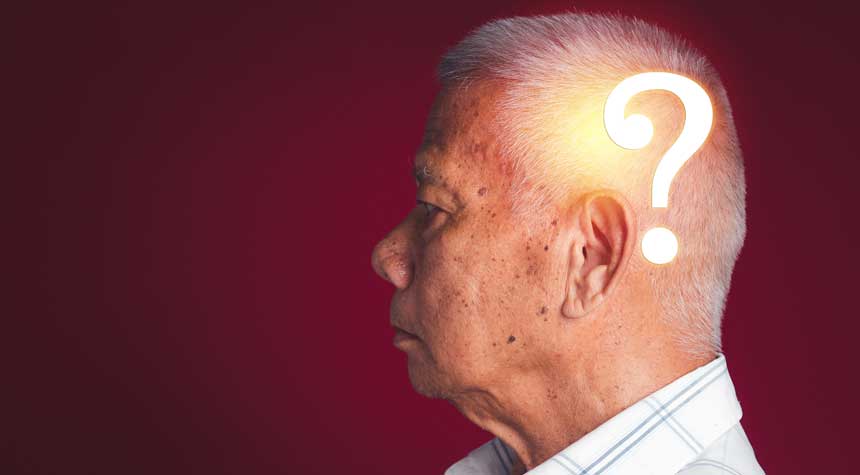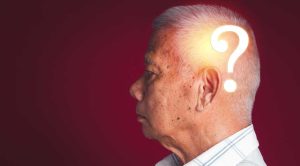
Scientists Could Heal Stroke Damage in the Brain With Breakthrough Research
Scientists at the University of Zurich made a major advancement in stroke recovery by using stem cell injections to repair stroke damage in mice.
The researchers reversed the stroke damage by injecting stem cells into the affected brain area, resulting in the growth of new neurons in the mice and the restoration of their motor skills.
The investigators believe their breakthrough results could help develop future treatments for humans who are recovering from a stroke and its devastating effects.
Stroke is a leading cause of serious long-term disability, according to the U.S. Centers for Disease Control (CDC) and Prevention. A stroke occurs when blood flow to part of the brain is blocked or drastically reduced, which cuts off oxygen and nutrients to the brain. Cells in the brain can die within minutes without a steady flow of oxygen-rich blood.
As a result of the lack of blood supply to the brain, a stroke can cause paralysis or weakness on one side of the body, speech impairment, changes in memory or behavior, loss of vision, and difficulty with movement, coordination, and balance. The CDC reports that a stroke reduces mobility in more than half of stroke survivors age 65 and older.
Currently, the damage that a stroke does to the brain is irreversible.
“That’s why it is essential to pursue new therapeutic approaches to potential brain regeneration after diseases or accidents,” Christian Tackenberg, who led the research team in Zurich, said in a news release. He is also the Scientific Head of Division in the Neurodegeneration Group at the University of Zurich (UZH) Institute for Regenerative Medicine.
While there have been other studies and clinical trials involving stem cell injections to treat stroke, Tackenberg and his team say that none have gone into the same level of detail as this one.
“Our analysis goes far beyond the scope of other studies, which focused on the immediate effects right after transplantation,” Tackenberg said.
The new study, released in September, expands on past research conducted by some of the team members who were investigating the optimal time for injecting stem cells after a stroke. It appeared to the researchers that the brain needs to stabilize, to some degree, after the stroke for the transplant to be effective.
Every year, more than 795,000 people in the United States suffer a stroke, according to the U.S. Centers for Disease Control (CDC) and Prevention. Additionally, the CDC reports that about 185,000 strokes, or nearly 1 in 4, occur in people who have had a previous stroke.
Study Finds New Neurons Came From Stem Cells
The research team in Zurich used genetically modified mice to prevent them from rejecting the human stem cells. The scientists also caused the mice to have a permanent stroke that resembled one that humans experience.
One week after inducing the stroke, the researchers transplanted neural stem cells into the part of the brain affected by the stroke. Neural stem cells, which originate from the body’s nervous system, have the potential to regenerate brain tissue, according to a study conducted by Tackenberg and other researchers.
“Our findings show that neural stem cells not only form new neurons, but also induce other regeneration processes,” Tackenberg said in a news release.
After implanting the mice with stem cells, the scientists were amazed at what they observed: most of the implanted stem cells not only stayed in place for the whole five-week analysis period, but also developed features of fully functioning neurons and were communicating with nearby cells.
And that’s not all. The scientists also noticed:
-
•
- The blood vessels of the mice were repairing themselves
- Inflammation in the brains of the mice was decreasing
- The blood-brain barrier was growing stronger
•
•
Another key finding was that the mice showed signs of improvement in movement and coordination, which can be seriously impaired by a stroke in humans.
Despite the promising study result, Tackenberg warns that more work needs to be done when it comes to testing this on humans. “We need to minimize risks and simplify a potential application in humans,” he said.
Clinical trials involving humans would also take longer than those for mice.
Currently, Tackenberg said that initial clinical trials using induced stem cells to treat Parkinson’s disease in humans have already started in Japan.
“Stroke could be one of the next diseases for which a clinical trial becomes possible,” he said.
Newly Developed Drug Mimics Effects Of Stroke Rehabilitation
People recovering from a stroke usually undergo rehabilitation, which may involve physical therapy, occupational therapy, speech therapy, and other options to help people restore mobility and regain some of their lost abilities. However, some people might find it physically challenging to do what’s necessary to make progress.
Researchers at UCLA Health have recently made a breakthrough that could give stroke survivors another option for recovery. UCLA scientists have discovered that the drug DDL-920 reproduces the positive effects of physical rehabilitation in mice.
The drug significantly improved the mice’s ability to control their movements, similar to the positive results typically seen after intensive physical therapy sessions.
“The goal is to have a medicine that stroke patients can take that produces the effects of rehabilitation,” Dr. S. Thomas Carmichael, the study’s lead author and professor and chair of UCLA Neurology, said in a news release. “Rehabilitation after stroke is limited in its actual effects because most patients cannot sustain the rehab intensity needed for stroke recovery.”
In their study, published in the journal Nature Communications, Dr. Carmichael and his team wanted to find out how physical rehab improved brain function after a stroke and whether they could develop a drug that could produce the same effects.
The DDL-920’s effectiveness stems from its focus on parvalbumin (PV) neurons, which play a vital role in coordinating movements. The researchers observed that physical rehabilitation can repair damaged connections in PV neurons and restore gamma oscillations, a brain rhythm that is important for coordinating activity among neurons. DDL-920 stimulates these PV neurons, effectively mirroring the effects of physical rehabilitation by restoring the lost gamma oscillations.
The release of the study’s positive findings prompted people to contact UCLA and ask if they could participate in a human clinical trial for DDL-920. The high interest led UCLA to issue a response on its news page about the research.
The UCLA investigators said more studies are necessary to determine the “safety and efficacy” of DDL-920 before it can be considered for clinical trials involving humans.
In its news story about the findings, Dr. Carmichael noted that recovering from a stroke is not like other fields of medicine, such as cardiology, infectious disease, or cancer, where drugs are available to treat the disease.
“Rehabilitation is a physical medicine approach that has been around for decades; we need to move rehabilitation into an era of molecular medicine,” Dr. Carmichael said.
Source Links:
https://www.sciencealert.com/stem-cells-repair-brain-damage-caused-by-stroke-in-mice
https://www.sciencedaily.com/releases/2025/09/250916221821.htm
https://www.cdc.gov/stroke/data-research/facts-stats/index.html
https://www.uclahealth.org/providers/stanley-carmichael







